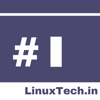PostgreSQL Database GUI
PostgreSQL is among the most popular database management systems in the world, heavily used by developers for all kinds of big or small applications, ranging from enterprise to personal projects.
PostgreSQL GUI is a management tool for open-source PostgreSQL database users to query, visualize, manipulate, analyze Postgres data. These GUI tools make administering PostgreSQL deployments easy. You can also access and navigate your database servers via a Postgres GUI.
Why Use a GUI Tool?
PostgreSQL GUI tools replace the traditional command-line interface tools used to work with databases.
Why choose a Postgres GUI solution over traditional CLIs?
- CLI requires a big and complex learning curve to get the best out of the database
- Consoles display does not always communicate all the information you need it to
- Difficulties in browsing and monitoring databases via a console.
GUI tools make PostgreSQL developers lives easier
- GUI Shortcuts help in faster and simpler work
- Most Postgres GUI provide a much shorter learning curve - much easier to learn for new users
- GUIs offer a rich library of data visualization opportunities for better interpretation
- GUIs make it easy to remotely access database and navigate server
- Easier access to files, features, and the operating system.
Many still prefer using CLI but the numbers are too small. Take a look at how CLI compares against GUIs advantages of using a PostgreSQL GUI.
Top PostgreSQL GUI Tools
After scouring the internet (Developer communities & forums like Reddit, Listing sites) I have identified some of the most popular (read ‘highly recommended’) Postgres GUI clients.
7 best PostgreSQL GUI tools
Let's start with the first and most popular ones that I identified after scouring the internet- developer forums, interviews, feedback.
1. DBeaver
DBeaver, one of the most popular Postgres GUI tools according to most comparison guides, is an open-source cross-platform GUI tool. In addition to PostgreSQL, it supports a range of other databases.
This GUI also comes with an enterprise version that provides enhanced plugins for greater developer productivity. DBeaver can run on all OSes - macOS, Windows, Linux.
It is easy to import and export data from a variety of file formats such as CSV, XML, XLS, HTML, JSON.
DBeaver Postgres GUI Strengths:
- Easy to get started with. No CLI knowledge required
- This is a cross-platform database GUI solution
- Installable desktop version
- You can integrate with MySQL, MongoDB, PostgreSQL, Oracle, and more
- Full-text data search and an ability to display search results as Tables/Views and multiple other data views
- A Visual Query Builder allows you to add SQL queries without SQL skills
- Has a free version so you can evaluate the capabilities of the GUI
DBeaver Postgres GUI Weaknesses:
- The performance depends on your machine’s capabilities. To unlock optimum performance levels, you will need in distributed development situations. You’ll have to turn to its enterprise option.
- It is slow when dealing with larger data sets as compared to competitors
- You need to re-launch the DBeaver app after some time of inactivity since DBeaver becomes disconnected from your database
- Needs frequent updates
2. pgAdmin
PgAdmin is one of the most popular GUIs available for Postgres users. Similar to DataBeaver, pgAdmin is an open-source database GUI. PgAdmin runs as a web application. Users can configure it to run on any cloud server and access it from anywhere - Windows, Linux, or macOS. It supports CSV file export.
PgAdmin is on its fourth major version, pgAdmin4, and supports all of PostgreSQL’s features.
pgAdmin Postgres GUI strengths:
- It runs as a web application Cross-platform solution, compatible with Linux, Windows, macOS
- Easy to find database objects on a left-hand menu
- Convenient SQL editor with shortcuts for better work efficiency
- A procedural language debugger inside aimed to help in code debugging
- Can be included on any cloud server when you work with a distributed database
- Sports extensive documentation & a large community
- The web application makes pgAdmin convenient for database administrators level users.
- Quite stable and fast in responding
pgAdmin Postgres GUI weaknesses:
- A major drawback to using pgAdmin is its installation barriers. It can be tricky for SQL developers who are not proficient in command line
- Working with multiple servers and databases requires a more advanced skill set that cannot be expected from newcomers
- Slow and not intuitive UI compared to the paid competitors
- The pgAdmin4 is crashy and unreliable. Many users prefer the pgAdmin3 over the 4th version.
3. DataGrip
DataGrip by JetBrains is an advanced database client supporting Windows, macOS, Linux operating systems. It is developed by JetBrains, one of the leading brands known for developing IDEs (makers of PhpStorm, WebStorm, IntelliJ, PyCharm, etc. DataGrip runs as a local application.
DataGrip supports a tremendous list of database management systems, including SQL Server, MySQL, Oracle, SQLite, Azure Database, DB2, H2, MariaDB, Cassandra, HyperSQL, Apache Derby, and many more. It comes with DDL and DML automation tools.
DataGrip PostgreSQL GUI strengths:
- Pick from a range of themes and plugins for as many database systems and dialects available to customize the UI
- An intuitive query console helps keep track of all your activities so you won’t lose your work
- Easily add, remove, edit, and clone data rows with a powerful editor
- It can detect bugs in your code and suggest the best options to fix them
- One-command dependency installation.
- An advanced refactoring process resolves all references automatically if you rename a variable or an object
- DataGrip is not just a GUI tool for PostgreSQL, but a full-featured IDE that has features like version control systems.
DataGrip PostgreSQL GUI weaknesses:
- It is not an open-source tool. Pricing starts at &199 a year per user.
- It is ideal for querying but not suitable for database administrators that may need admin tools deployed over the cloud
- The IDE is not native to PostgreSQL. So it lacks some Postgres-specific features like debugging can be challenging since not all errors can be shown at once
- It has a longer learning curve. Can be complicated for beginners
- It is ideal for small teams that have only one or a few Postgres DBs.
4. HeidiSQL
HeidiSQL is an all-in-one tool for database management, development, and administration.
Built exclusively for Windows, HeidiSQL is a free and open-source PostgresGUI tool. Just like DBeaver and Navicat, HeidiSQL can also connect to different database drivers, like MySQL, Microsoft SQL Server, MariaDB. Users can export data as Excel, HTML, JSON, PHP files.
HeidiSQL PostgreSQL GUI strengths:
- Open-source and free to use
- It is easy to download and install and connect to a database
- A useful tool for debugging database problems as you get real-time visibility into the backend. The console prints out commands that GUI executes in real-time
- Connect and manage several database servers from a single window
- Code-completion and syntax-highlighting functionality
- Bulk table browsing and editing via a simple-to-use grid
- 100% encrypted data connection between the client and the server
HeidiSQL PostgreSQL GUI weaknesses:
- It is a lightweight GUI and advanced features like debugger is missing
- It does not have cross-platform support which is not an issue for the readers that use Windows
- Frequent stability issues
- HeidiSQL does have a lot of bugs, but the author is very attentive and active in addressing issues. An active support community is constantly enhancing this GUI tool
5. Navicat
Navicat is a MySQL, PostgreSQL, Oracle, MongoDB GUI. It is a highly intuitive GUI tool and it's what you would expect from software that simplifies your communication with databases.
It is a paid tool and that allows it to offer more features as compared to an open-source GUI tool. A special feature of the tool is that it enables collaboration with popular cloud databases like Amazon Redshift, Amazon Aurora, Google Cloud, Microsoft Azure, Alibaba Cloud and others.
You can import and export data to diverse formats like Excel, Access, CSV, and more.
Navicat PostgreSQL GUI strengths:
- Easily installable in a few command lines. Windows, Linux, macOS, iOS support.
- It has an intuitive and fast user interface
- Powerful data modelling tool for visualizing database structures, making changes, and designing entire schemas from scratch
- Manipulate database objects visually through diagrams
- Run scheduled jobs that boost team productivity
- An add-on feature (Navicat Cloud) offers project-based team collaboration
- Secure connections through SSH tunnelling and SSL
- Easily create and edit SQL statements with its convenient visual SQL builder
- Navicat offers greater aesthetic appeal as compared to competitors. For example, choide of light or dark theme
Navicat PostgreSQL GUI strengths Weaknesses:
- Costly. The lightest plan starts from $199 per year and a small 14 day period trial
- Advanced visualization features like data modelling and charts are available only in enterprise plans
- Slow speed and GUI performance. You have to refresh every time a new row is added
- you have to buy licenses to be able to work with PostgreSQL or MySQL
6. TablePlus
TablePlus is a native GUI software for managing both SQL and NoSQL databases - MySQL, PostgreSQL, SQLite, MongoDB to name a few.
TablePlus has the perfect balance between nice and simple UI. It can be used for a lot of storage systems so it's even more useful if you also work with solutions like Redis and not just Postgres.
You will find an active community of the TablePlus team on GitHub.
TablePlus PostgreSQL GUI strengths:
- Nice and Customizable UI freeing you from the need to use Mojave.
- Supports multiple backends - Linux, Mac, Windows
- High performance and speed according to users’ feedback
- End-to-end encrypted database connection
- Built-in SSH and ensures your database credentials are stored securely
- Shortcuts help increase efficiency and save the user time
- Syntax colour coding /highlighting support
TablePlus PostgreSQL GUI Weaknesses:
- Frequent errors when working with databases other than Postgres
- Licensed by computer $59 for one $99 for two. A free trial offers strictly limited functionality
- Creating a consistent UI can be challenging as pointed out by some users
- Customer support leaves much to be desired
- TablePlus UI opens up a response sub-tab per query vs. putting all the output on a single page that can be annoying when running complex pgsql statements
7. Postico - PostgreSQL GUI macOS
Postico offers SQL developers a top-of-the-tier SQL editor and query interface to Mac users who work with PostgreSQL databases. Developed by Egger Apps, Postico provides the easiest and fastest way to run a PostgreSQL GUI on Mac devices. They also offer TableTool, an open-source CSV editor, and jetread, a tool to let you read Access files from the command line.
Postico offers the ability to interact with data, filter rows, sort rows, edit and even batch edit rows. Create and alter columns, create and drop tables, and create and alter views.
Postico PostgreSQL GUI for Mac strengths:
- It works very well on macOS, the UI is fast, responsive and integrates seamlessly with the OS.
- SQL editor that does not crash
- Postico’s syntax highlighting, multiple result sets, automatic indenting, and auto-suggest for column names makes writing queries easy and smooth
- Deep focus on usability and making features meaningful
- Nice and clean user interface and key features to make SQL development a joy
- Free version to get started
- Postico is the successor of PG Commander, an older Mac Postgres GUI tool that is also widely used. They are both maintained by the same person.
Postico PostgreSQL GUI for Mac Weaknesses:
- It lacks a lot of features compared with Datagrip or DBeaver, but for simple use cases, it's really enough.
- Only available for macOS
- No multiple query tabs in the free trial version
- Postico is a commercial app, with a one-time fee of $35. There is a free trial available.
- No support for other databases
8. DronaHQ - competing with traditional PostgreSQL GUI software
DronaHQ is a web-based low-code internal tool builder to create internal tools and custom applications on top of existing data. Thanks to a WYSIWYG UI editor and pre-built UI controls, you can create pixel-perfect front end applications in no time. Using ready data connectors, you can quickly connect to SQL, NoSQL data sources like PostgreSQL, MySQL, MongoDB, Oracle, Firebase, Redshift, and many more. It is also easy to connect to any REST of GraphQL API as well.
Easy to create interactive data visualizations tools and front end applications like database admin panels, guis, dashboards, among others
DronaHQ Postgres GUI Strengths:
- No need to download and install anything. Cloud-based development platform.
- Visual builder is easy to learn. Reusable controls like table grids, lists, detailed view, buttons, form fields, and custom UI controls further save time spent in designing the perfect user interface
- A visual query builder to query your SQL/NoSQL databases when you need server-side filtering based on criteria defined at run time.
- Built once, you can access your database GUI from any end-user portal.
- Connects to any data source using ready connectors or APIs - You can work with your Postgres DB on the same GUI as you work with your MongoDB collections
- Support unlimited user in all (usage-based) pricing plans
- interact with data, filter rows, sort rows, edit
- If you need to share the tool/app with more end-users, you can grant role-based access permissions to control who has view rights, edit rights, delete permissions, and so on.
- It allows users to interactively explore the data, like clicking on a cell and adding a filter to show other rows that have the same value or range, etc.
DronaHQ Postgres GUI Weaknesses:
- DronaHQ is not primarily designed for Postgres so it is missing some features like real-time query debugging
- Only about 50 ready connectors but more are in queue
Which is the best PostgreSQL GUI?
The Postgres GUI you opt for will be based on your OS, requirements, budgets. We have covered many open-source and paid tools, windows specific, mac specific, and cross-platform GUI tools. Some are suitable for small teams while some are more sensible for larger enterprises. There are GUI tools supporting PostgreSQL only and cross-platform ones.
So which one is the best for you? It depends. If you are a data analyst looking to create unified database views - give DBeaver, DataGrip, HeidiSQL a spin. However, if you are a larger team, giving Navicat a go would make more sense owing to its collaboration features
Postico and pgAdmin are the only PostgreSQL native GUI on our list. pgAdmin makes a solid choice if you are a DBA who wants a free solution that can scale across multiple servers. If you are a mac user, Postico makes more sense as it is a Postgres native GUI designed exclusively for macOS users.
DronaHQ stands out when you need a solution to work with multiple data sources. Connecting to multiple data sources in a click speeds up the journey to visualizing your data sets in a single front end. Could combine SQL and NoSQL databases like view/manage data without queries, and create the cleanest UI. You can embed the dashboards/charts it generates into other websites.
A low-code approach to managing your Postgres DB is more time-saving, flexible, and powerful than the use of traditional outdated GUI tools like pgAdmin.
DronaHQ gives you a complete tool kit to build powerful database GUIs. Pre-built UI controls, frontend event handler, ready database connectors - you can put together fully functional applications in just minutes and share with unlimited users. Take it for a spin for FREE >






Oldest comments (0)